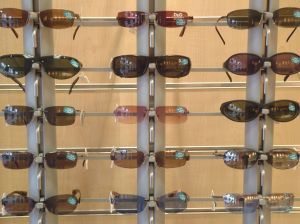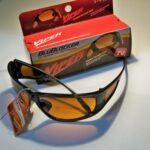Longer daylight hours and the lure of days in the summer sun mean greater exposure to the harmful effects of ultraviolet (UV) rays. And while most of us remember to protect our skin from the sun’s damage, we frequently forget the importance of protecting our eyes.
Summer can be a dangerous time for the eyes because people spend so much time outdoors exposed to the sun,” said Sue Lowe, OD, an American Optometric Association (AOA) UV protection expert. “Overexposure to ultraviolet rays fast forwards aging of the eyes and increases the risk for serious diseases.”
The AOA reports that overexposure to UV rays has been linked to age-related cataracts, photokeratitis or sunburn of the eyes, and macular degeneration. These conditions can cause blurred vision, irritation, redness, tearing, temporary vision loss, and in some instances, blindness.
The good news is that protecting your eyes from UV rays is as simple as putting on a pair of sunglasses.
What to Look For
Here are some important things to consider when shopping for sunglasses:
UV protection – The AOA recommends that you always choose sunglasses that are labeled as blocking 98-100 percent of UVA and UVB rays. For maximum protection, look for sunglasses labeled as blocking “all UV radiation up to 400 nanometers,” which is equivalent to blocking 100 percent. If there is no label, or if it says something as vague as “UV absorbing” or “blocks most UV light,” don’t buy them.
Lens color – More than a matter of taste, there are color-related benefits to consider when you purchase sunglasses. The American Academy of Ophthalmology (AAO) advises that gray lenses provide the least color distortion. Green tinted lenses reduce glare and provide good contrast between objects. Yellow lenses reduce the haze from blue light, but cause more color distortion. Brown and amber tints reduce glare but distort colors more than gray tints do.
Uniformity of tint – Make sure that lens tint is not darker in one area than another. The Glaucoma Research Foundation recommends you check for imperfections by holding the glasses at arm’s length and looking through them at a straight line in the distance, such as a door. Slowly move the lens across the line. If the straight edge distorts in any way, the lens is flawed.
Lens materials – Three materials commonly used for sunglasses include polycarbonate, a durable lightweight plastic; glass, durable, but heavier; and CR-39, plastic used mostly in prescription sunglasses. The AAO recommends polycarbonate lenses for people active in sports.
Polarized sunglasses – Polarized lenses reduce reflected glare from such smooth surfaces as pavement, water or snow. However, polarization does not necessarily mean UV protection. Be sure to read the label to verify the lenses absorb UV rays.
Photochromatic lenses – These lenses darken automatically in the bright sun, become lighter in low light, and protect against UV rays.
Looking Good and Seeing Well
There is no doubt that sunglasses have become a fashion statement and today’s hot accessory is designer sunglasses. However, you do not have to spend a lot of money to get attractive and effective protection for your eyes.
Some cheap sunglasses are great, some expensive ones are not,” Dr. Lee R. Duffner, clinical correspondent for the AAO told the New York Times. He cautioned against buying knock-offs that look great but offer no UV protection. In some cases, they are worse than no sunglasses at all. Sunglasses that provide good protection can be found in established drug chains and department stores for $10-$20.
As for style, the ideal frame would cover the sides of your eyes to prevent light from entering. Wraparound frames are best, but if you feel you this style is unflattering, look for close-fitting glasses with wide lenses. Models with small lenses offer the least protection.
Fun in the Sun
We all look forward to the summer and to days in the sun. With UV-absorbing sunglasses and a wide-brimmed hat as an extra precaution, you can enjoy the season to its fullest and keep your eyes healthy.





